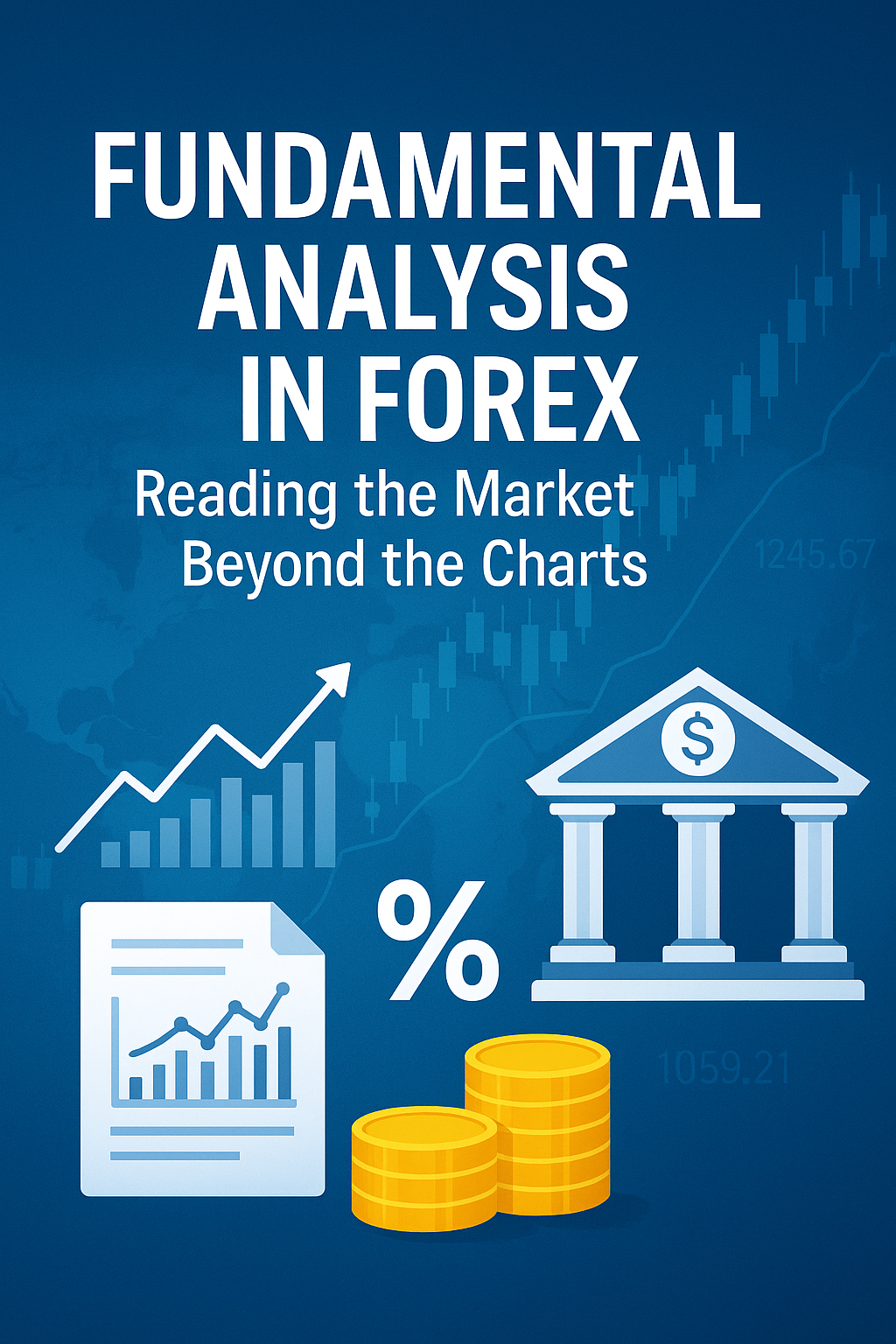📊 Fundamental Analysis in Forex: Reading the Market Beyond the Charts
Table of Contents
-
Introduction to Fundamental Analysis
-
Fundamental vs. Technical Analysis
-
Major Economic Indicators That Move the Market
-
Central Banks and Monetary Policy
-
Interest Rates and Forex
-
Inflation Data and Its Impact
-
GDP, Employment, and Manufacturing Reports
-
Political Events and Geopolitical Risk
-
News Trading Strategies
-
Understanding the Economic Calendar
-
High-Impact vs. Low-Impact News
-
Fundamental Analysis for Short-Term vs. Long-Term Trading
-
Combining Fundamentals with Technicals
-
Tools for Fundamental Traders
-
Final Thoughts: Becoming a News-Savvy Trader
1. Introduction to Fundamental Analysis
Fundamental analysis is the study of economic, financial, and political factors that influence currency prices. Instead of reading charts, you’re reading the world’s behavior — interest rates, inflation, employment, central bank decisions, etc.
2. Fundamental vs. Technical Analysis
| Feature | Technical Analysis | Fundamental Analysis |
|---|---|---|
| Based on | Price charts & indicators | Economic news & data |
| Timeframe | Short to medium-term | Medium to long-term |
| Focus | Patterns & price action | Country strength & news |
| Tools | RSI, MACD, trendlines | GDP, CPI, interest rates |
Smart traders often combine both for stronger signals.
3. Major Economic Indicators That Move the Market
-
Interest Rate Decisions
-
Inflation Data (CPI)
-
Gross Domestic Product (GDP)
-
Employment Data (e.g., NFP - Non-Farm Payrolls)
-
Retail Sales
-
Consumer Confidence
-
PMI (Purchasing Managers' Index)
These indicators give clues about a country’s economic health.
4. Central Banks and Monetary Policy
Central banks like:
-
Federal Reserve (USA)
-
European Central Bank (ECB)
-
Bank of England (BoE)
-
Bank of Japan (BoJ)
control:
-
Interest rates
-
Money supply
-
Inflation targets
Any statement or decision by a central bank can cause massive market movements. Traders hang on every word from Fed Chair Jerome Powell.
5. Interest Rates and Forex
High interest = strong currency.
Low interest = weak currency.
Investors chase yield, so if the US raises rates, the USD usually strengthens.
Interest rate differentials between two currencies drive trading opportunities.
6. Inflation Data and Its Impact
Inflation affects purchasing power. The CPI (Consumer Price Index) and PPI (Producer Price Index) are key inflation indicators.
High inflation = central banks may raise rates → stronger currency
Low inflation = rates may stay low or be cut → weaker currency
7. GDP, Employment, and Manufacturing Reports
-
GDP reflects the economy’s size and growth.
-
Employment reports show labor market health.
-
Manufacturing indices (like ISM or PMI) show production activity.
Strong data = currency appreciation
Weak data = currency depreciation
8. Political Events and Geopolitical Risk
-
Elections
-
Wars or military tensions
-
Policy changes
-
Trade wars
These create uncertainty → markets hate uncertainty.
Safe-haven currencies like USD, CHF, JPY often rise in unstable times.
9. News Trading Strategies
News trading involves entering trades right before or after economic announcements. It’s risky but can be profitable.
Tips:
-
Trade only high-impact news (NFP, interest rate decisions, CPI)
-
Use pending orders
-
Expect volatility and slippage
-
Always have a stop loss!
10. Understanding the Economic Calendar
Use calendars like:
-
Forex Factory
-
Investing.com
-
Myfxbook Economic Calendar
Look for:
-
Event name
-
Expected vs. actual values
-
Impact level (low, medium, high)
-
Previous outcomes
11. High-Impact vs. Low-Impact News
Focus on high-impact news for big moves:
| Impact Level | Examples |
|---|---|
| High | NFP, FOMC Rate Decisions, CPI |
| Medium | Retail Sales, PMI, Trade Balance |
| Low | Business Inventories, Mortgage Data |
12. Fundamental Analysis for Short-Term vs. Long-Term Trading
-
Short-term traders focus on news spikes & intraday volatility
-
Long-term traders analyze economic trends & central bank direction
Both require awareness and interpretation of data.
13. Combining Fundamentals with Technicals
-
Use fundamentals to choose the pair
-
Use technicals to find entry/exit points
Example:
-
USD likely to rise due to rate hike → go long USD/JPY
-
Wait for technical breakout before entry
This combo = smart trading.
14. Tools for Fundamental Traders
-
Forex Factory Calendar
-
Reuters & Bloomberg
-
Central bank websites
-
Trading platforms with news feeds
-
Market sentiment tools
Stay informed = prepared = profitable.
15. Final Thoughts: Becoming a News-Savvy Trader
📌 Understand the story behind the price
📌 Be aware of the global economic picture
📌 Don’t trade blindly into news
📌 Combine fundamentals with chart logic
📌 Stay calm, focused, and always read the "why" behind every move
“If technicals show the how, fundamentals show the why.”
— A balanced trader
